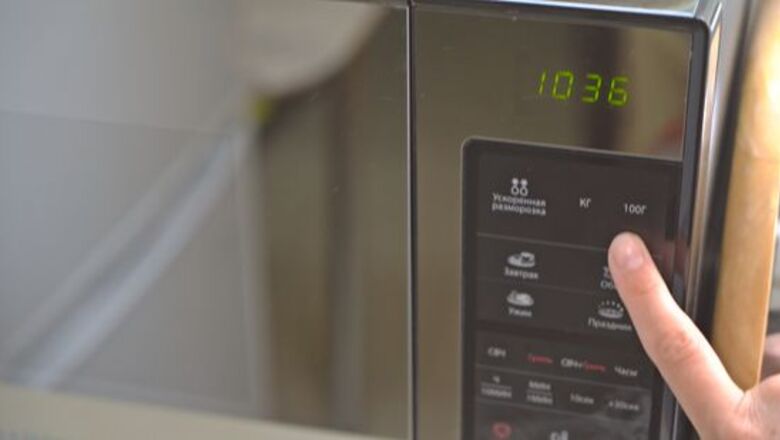
views
Liquefying honey in the microwave
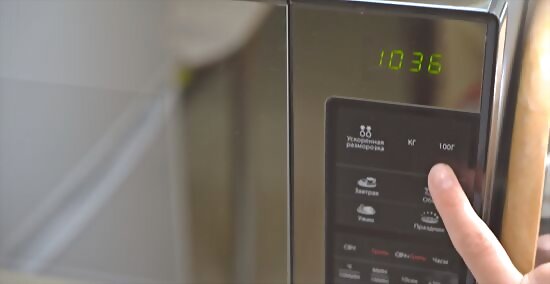
Use a microwave cautiously when liquefying honey. If you want your honey to retain the benefits of “raw” honey, use the microwave with caution. While quick and efficient, microwaving can easily destroy the beneficial enzymes by overheating them.
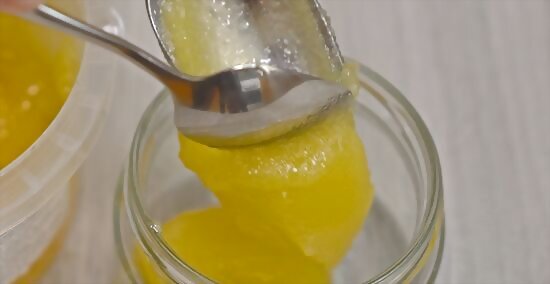
Transfer your honey from any plastic containers into a glass jar by spoon. Besides presenting a possible health hazard, plastic containers don't transfer heat as well as glass does. Bottom line: you'll get the job done quicker and more safely if you move your honey to a glass jar instead of using a plastic container.
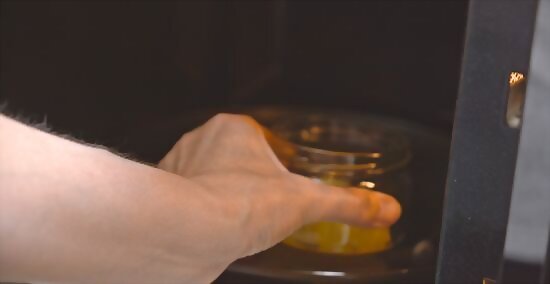
Start microwaving honey in 30 second increments on the defrost setting. Cooking time for your batch will vary based on the amount of honey you’re liquefying, the starting temperature of the honey, and its sugar content as well as content the wattage of your microwave. It is best to start off at low power and use short microwave times. This may take more cycles and an extra minute or two, but you won't ruin the taste of the honey or inhibit the effectiveness of the good enzymes during the liquefaction process. Experiment to find what works for you in your environment, but experiment cautiously. Above 100°F (38ºC), the flavor of honey is altered; above 120°F (49ºC), the beneficial enzymes in the honey start to break down and stop being effective.
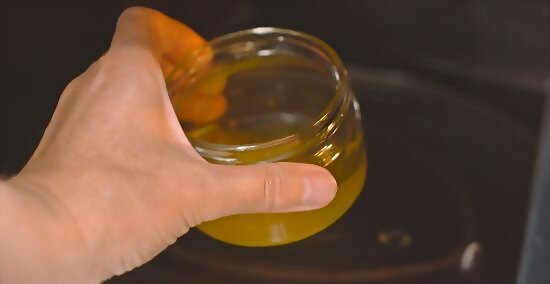
Check for liquefaction of the honey after 30 seconds, particularly near the surface of the jar. If pockets of honey have started to liquefy, stir the honey to help transfer the heat. If the honey hasn’t started to liquefy, continue microwaving in 30 second increments until some crystals start to liquefy.

Microwave for additional increments of 15 to 30 seconds, stirring after each microwaving session. Continue until the honey has nearly liquefied, then stir until the process is complete. If most of the honey has liquefied but some stubborn crystals remain, you may want to finish the job off manually by stirring the honey vigorously instead of continuing to heat it.
Liquefying honey with warm water
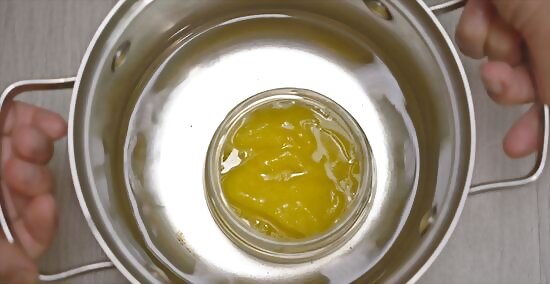
Liquefy honey in a water bath if you're particular about preserving natural enzymes. Many people use honey in their diet because it contains enzymes that assist in digestion and promote overall health. If you are one of them, and find yourself with a crystallized mass of hard honey, use a warm water bath for best results. As mentioned above, microwaving can not only affect the taste of the honey, it can also zap the honey beyond the point in which its enzymes break down. Since you can control the temperature of a water bath more easily, you are less likely to lose the beneficial aspects of honey using this method.
Transfer your honey into a glass jar if necessary. Avoid plastic containers if you can. Not only are they shallower (making tipping over a very real possibility), they are also worse at conducting heat.
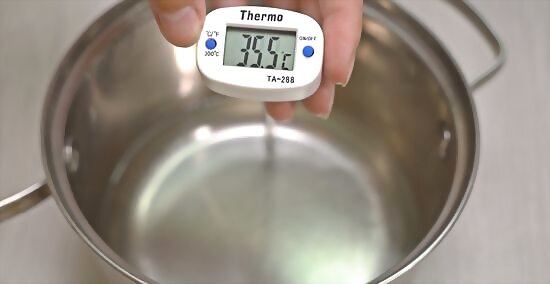
Fill a large saucepan with water and gently heat it up to about 95°F (35ºC). After water has reached about 95°F (35ºC), remove the saucepan from the heat source. The water will continue to heat even after the heat source has been removed. Check the temperature with a kitchen thermometer for best results. If you don't have a thermometer, try testing the water temperature by resting your elbow in it for around 5 seconds. The water should feel warm but not hot enough to cause discomfort when it's at the right temperature. While exact estimates vary, it's best not to let honey heat too far beyond 95ºF (35ºC). Once it heat's significantly beyond this, the nutritional enzymes in the honey start getting destroyed. Note that some estimates place this maximum temperature at about 110ºF (43ºC) instead. While the exact temperature is somewhat debated, it's best to stay within this range.
Submerge the crystallized honey in the warm water. Open the honey jar and carefully place the honey in the water bath. Wait for the warm water to begin breaking down the glucose crystals on the sides of the honey jar. You can also liquify your honey in a double boiler.
Stir the honey periodically to speed up the liquefaction. Crystallized honey is a poor heat conductor; stirring will help transfer heat more evenly from the sides of the jar to the middle of the honey. Warming up the honey makes it thicker, looser, and easier to work with.
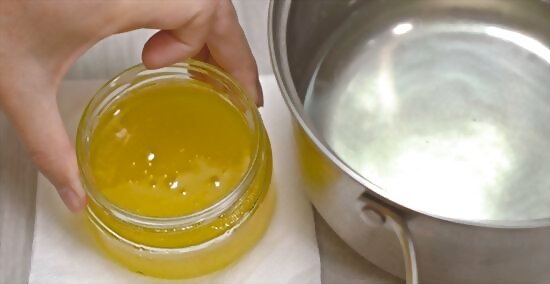
Remove honey from the water bath when it has fully liquefied. Since the water bath — removed from its heat source — will only get colder, you're in no danger of overheating the honey by simply leaving it in the water bath. Stir occasionally for best results; otherwise, set it and forget it.
Preventing crystallization
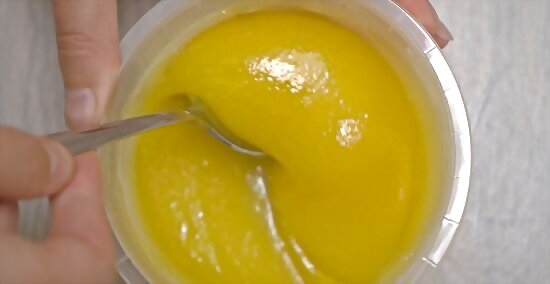
Stir the honey crystals to produce friction. Stirring the honey with a sturdy spoon will cause friction. Anyone who's gotten a friction burn will know firsthand that rubbing two surfaces together very quickly produces heat. This heat helps liquefy the honey. So if you find yourself with a clump of crystallized honey and don't have a microwave or burner, or simply want to try something new, stir vigorously for 30 seconds to a minute and see if the problem isn't solved. If you're trying to prevent crystallization in the first place, the type of honey you have will determine how quickly it crystallizes. Honey with high glucose content will crystallize much faster than honey with low glucose. So alfalfa, cotton, and dandelion honey will crystallize much faster than sage, longan, or Tupelo honey. Stirring these types of honey is just a delay tactic.
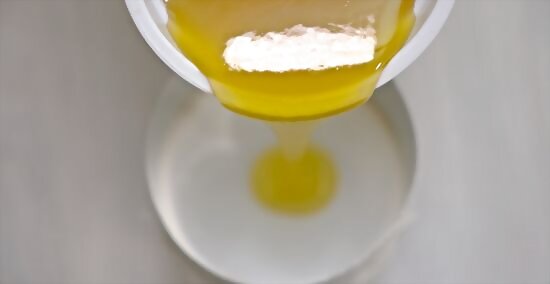
Filter raw honey through a microfilter to retain small particles that speed up crystallization. Small particles like pollen grains, flecks of wax, and air bubbles become the “seeds” of crystallization if left in honey. Remove them with a polyester microfilter and prolong the life of your liquefied honey. If you don’t have a microfilter, consider using a fine nylon cloth or even cheesecloth on top of a sieve as a filter.
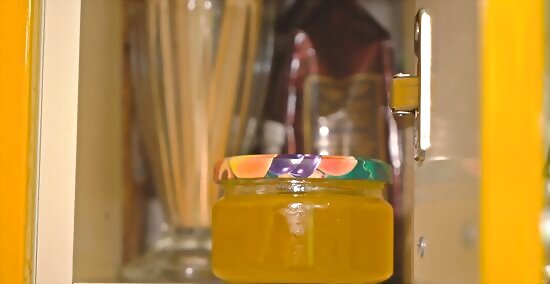
Avoid storing honey in cold cupboards or in refrigerators in order to keep it liquefied longer. The ideal storage temperature of honey ranges from 21-27°C (70-80°F). Try to store honey in an environment with a fairly regulated temperature.
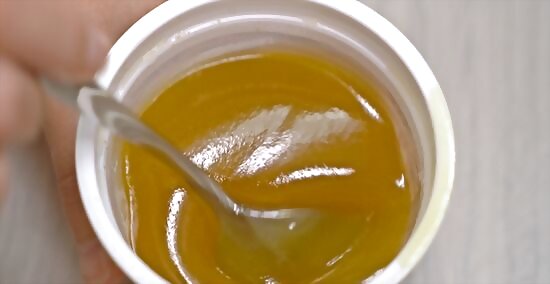
Apply gentle heat to head off further crystallization if you see sugar crystals forming. As soon as you notice crystals forming, liquefy them. The first crystal growth starts slowly but will accelerate if the crystals are left undisturbed, so stay vigilant and you won’t have to deal with a crystallized mass of honey nearly as often, if ever.

















Comments
0 comment